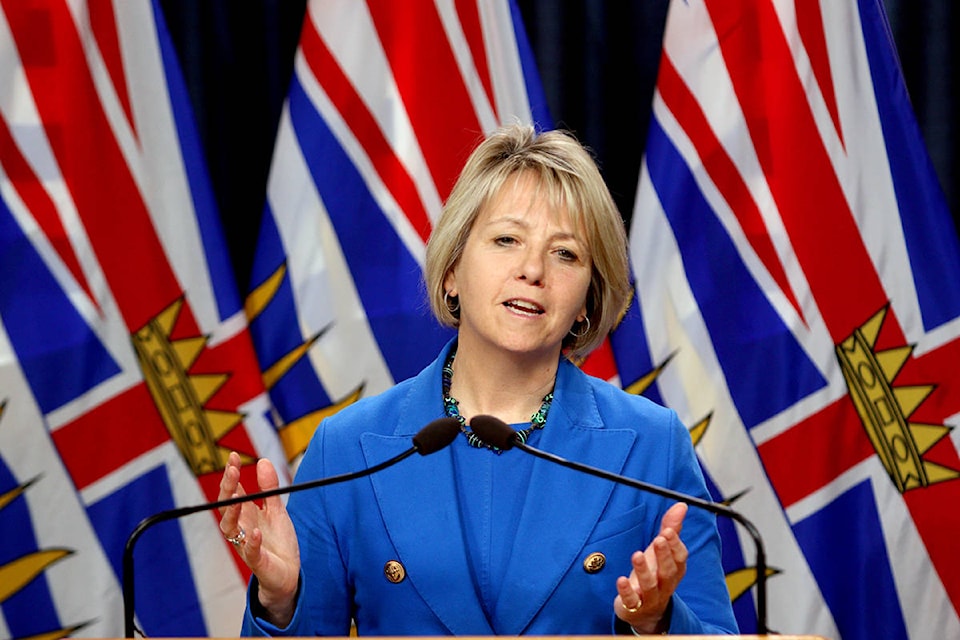To reach more people from diverse backgrounds, the province should be hiring non-English-language interpreters for Dr. Bonnie Henry and Health Minister Adrian Dix’s COVID-19 press conferences, a B.C. public health advocate says.
Kulpreet Singh, the founder of the South Asian Mental Health Alliance and an advocate for equity in public health, says timely interpretations of public health messages in languages other than English would increase public awareness about COVID-19 and what must be done to reduce its spread.
“I think there definitely has been a gap in communication in terms of the COVID-19 press conferences and the overdose crisis updates,” Singh said. “I feel that on the provincial government level, if we had had interpreters from the first day back in March to now, we would have had a population that was much more well-versed in the protocols.”
Across B.C., there are more than 1.3 million people for whom English is not their first language, and more than 700,000 who mostly speak a language other than English at home. In the Fraser Health region, where COVID-19 rates have been highest, more than 370,000 people speak a language other than English most often at home.
“Obviously, on a higher, government level you can’t have all languages available, but [you should try] to cover as much of the population in a basic way,” Singh said. He pointed to the effectiveness of sign-language interpretation of the press conferences. “In the same way, for people who are from different language backgrounds, it would improve understanding.”
We ask @adriandix @jjhorgan to please provide multilingual interpreters for COVID19 & overdose crisis updates, along with multilingual audio/video on government websites. In order to make our outreach more equitable & inclusive, this should be a standard, not an afterthought.
— Kulpreet Singh (@kulpreetsingh) November 13, 2020
Thus far, communication in other languages has been limited to written translations of government press releases and statements. Those are mostly confined to government and health authority websites that aren’t heavily frequented by the general public, although they are used by non-English media in their reports.
Fairly recently, Fraser Health has begun posting more social media messages in a variety of languages other than English.
Do you have something to add to this story, or something else we should report on? Email:
tolsen@abbynews.com
@ty_olsen
Like us on Facebook and follow us on Twitter
Singh was quick to applaud those efforts.
“Fraser Health has been providing a lot of their infographics in diverse languages and also customizing them for different cultural concepts, like how to wear a mask with a hijab, how to wear a mask with a turban,” he said. “I think it was a delayed reaction, but I’m really happy to see they were picking up on it. I think it should become a standard. It should not be an afterthought.”
But he says there continues to be an important gap in the lack of interpretation for the much-watched public health briefings.
“Multilingual interpretation of provincial press conferences should be a standard, rather than just having written translations,” Singh said. “What happens with the written translations is they are provided on the government website, but the average British Columbian doesn’t access the government press release website. To reach the common public, we have to get a little bit more creative and use Facebook, YouTube, TikTok, Instagram and provide more audio and video in different languages.”
Singh said the situation also underscores the need for more diversity among government workers, and more people who can spot and address gaps before they are obvious.
“Equity and diversity is about making health promotion accessible, which in turn will save lives, so it has a real on-the-ground impact.”
Working with community leaders is important and vital, he said. But he said health officials also should be working to directly connect the public with the information they need during the pandemic. That includes both in providing interpreters for high-profile press conferences, and providing more information that can be shared through social channels.
“When it comes to official information – especially in this era when we are seeing information being changed or manipulated, when we see fake news or people spreading information that may not be reliable – we are looking for reliable information during an uncertain time from the government, if the government can directly provide it in those languages, rather than relying on health authorities alone or community leaders alone, that would make a difference, because then we know it’s coming from the source.”
Asked about its efforts to reach South Asian communities, a Fraser Health spokesperson says the health authority has been creating shareable information and resources in a range of languages, including Punjabi, Hindi, Farsi and Simplified Chinese. The spokesperson also said Fraser Health has provided translated materials to religious organizations, private schools, soccer clubs, Halal stores, and non-profits that provide services to the South Asian community. They’ve also offered workshops to non-profits that work with newcomers to Canada to help keep them updated on the latest guidelines.
An email from a Ministry of Health spokesperson said the government “shares public health information in as many ways and as many languages as possible, and pointed to translated media statements. The News has asked if the ministry has any intention of providing live interpreters.
Do you have something to add to this story, or something else we should report on? Email:
tolsen@abbynews.com
